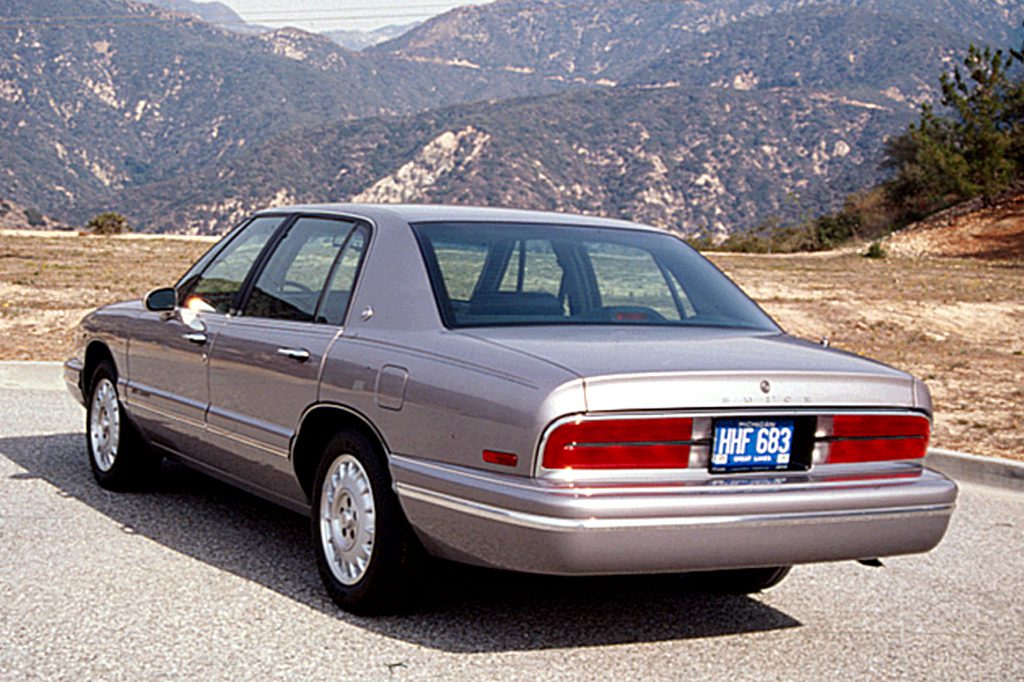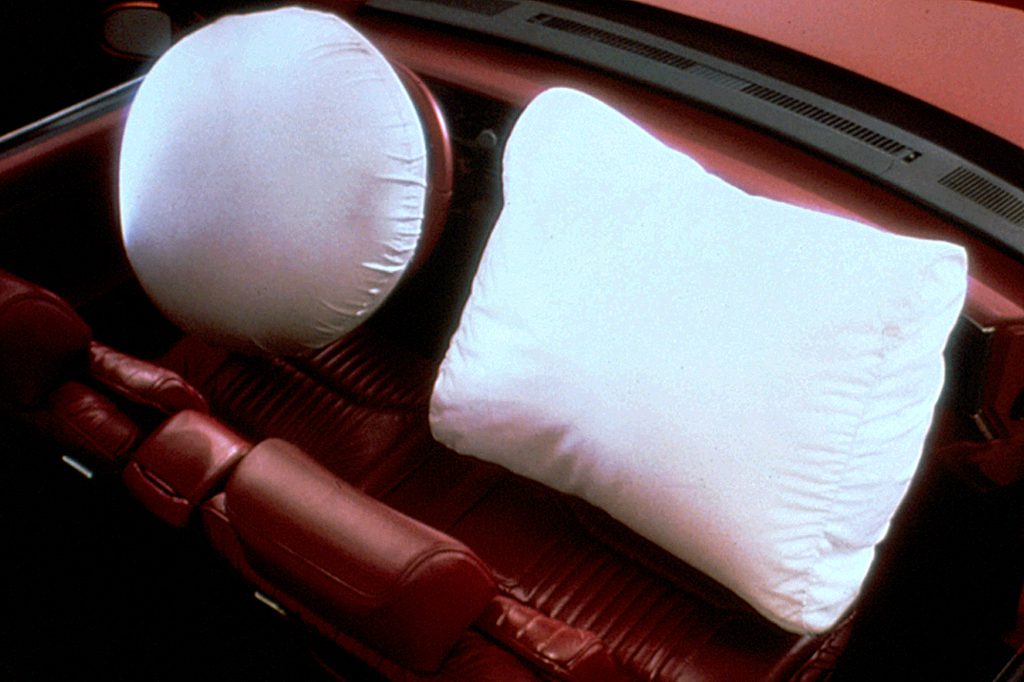| Premium large car; Built in USA |
|
|
| Good condition price range: $1,200 – $2,800* |

1991 Buick Park Avenue

1993 Buick Park Avenue Ultra

1991 Buick Park interior

1995 Buick Park Avenue

1994 Buick Park Avenue interior
| Pros: |
|
| Cons: |
|
Park Avenue has sold well and is certainly worth a look. Take note, though: LeSabres offer many of the same features at a lower cost.
Overview
Taking over the spot in Buick’s lineup vacated by the Electra sedan, the Park Avenue wore a new body on an updated front-drive chassis with the same wheelbase, but eight inches longer overall. Oldsmobile’s Ninety Eight uses the same design. Base and more posh Ultra editions came with antilock braking, a driver-side airbag, height-adjustable seatbelts, and Pass-Key theft-deterrent system. New tuned port induction helped boost horsepower of the 3.8-liter V6 engine to 170, and torque to 220 pound-feet. Also new was GM’s electronic 4-speed automatic transmission, whose computer integrated controls for the transmission, engine, and cruise control.
Yearly Updates
| 1992 Park Avenue A supercharged Ultra edition went on sale for ’92, and Park Avenues could have traction control as an option. |
| 1993 Park Avenue Park Avenues earned a slightly stronger base engine, as well as new grilles and taillights. For the first time, regular and Ultra editions had different styling touches. Automatic ride control became an option, adjusting suspension damping in three modes. |
| 1994 Park Avenue Dual airbags were installed for 1994, and the Ultra’s supercharged engine gained 20 horsepower. A dashboard switch could turn off the traction-control system. New options included a heated driver’s seat and steering-wheel controls for the radio and climate systems. |
| 1995 Park Avenue Base Park Avenues got a much stronger engine this year: a Series II edition rated at 205 horsepower. Base cars also got a new grille, bodyside moldings, and fascias. New instrument clusters went into both models, while climate controls got larger buttons and brighter graphics. |
| 1996 Park Avenue Park Avenue Ultras gained 20 horsepower, courtesy of a Series II supercharged engine. Both engines got long-life coolant, plus 100,000-mile spark plugs. A new Personal Choice feature went into models with keyless entry. The remote-entry transmitter could adjust driver’s mirrors, door locks, lighting, and other accessories to either of two settings. Also new was magnetic variable-assist steering. |
